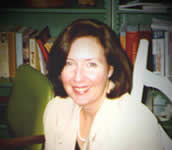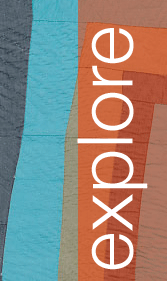ALICIA CARROLL
 Alicia Carroll is an Associate Professor of English. She received her PhD from the Graduate Center of the City University of New York. A specialist in nineteenth-century English fiction, Carroll’s approach to literature is through the methods and theories of Cultural Studies. As the Project Director of the Quilts of Gee's Bend in Context project, she is committed to promoting the study of the quilts on both a local and national level. Her research interest in the quilts lies in the meanings made by their exhibition in contemporary culture.
Alicia Carroll is an Associate Professor of English. She received her PhD from the Graduate Center of the City University of New York. A specialist in nineteenth-century English fiction, Carroll’s approach to literature is through the methods and theories of Cultural Studies. As the Project Director of the Quilts of Gee's Bend in Context project, she is committed to promoting the study of the quilts on both a local and national level. Her research interest in the quilts lies in the meanings made by their exhibition in contemporary culture.
Abstract:
The millennial exhibit “The Quilts of Gee's Bend” opened at an autumnal moment in American culture. This monumental exhibit, now firmly recognized as having shown some of “the most miraculous works of modern art in America” (Kimmelman), seems to have been timed, artlessly, to do the cultural work of elegy in America. Formed at the close of the twentieth century, the exhibit was curated during the epoch-making moment of violence in the new century’s America; it reached New York, a city both in recovery and in deep reflection and mourning over the events of September 11th 2001. The Whitney became a public space to grieve for private and public loss and to celebrate individual and communal American achievement. The exhibit’s rhetoric implements elegiac language to construct national longings and anxieties over both recovery and loss. Received as survivors, the tattered and faded quilts speak to an American future that is far less optimistic than ever before. As the show travels in its “national” tour from one American city to another, it enters the “circuit of culture” in which its production enters into its exhibition and consumption in a dizzying exchange of meanings. The quilts have become national icons; what words will we ascribe to their eloquent silences? And what stories will be displaced in their new narrative category as apocalyptic millennial art? What new contexts will they meet and, in short, what are the consequences of subsuming Alabama quilts into a narrative of American elegy?


